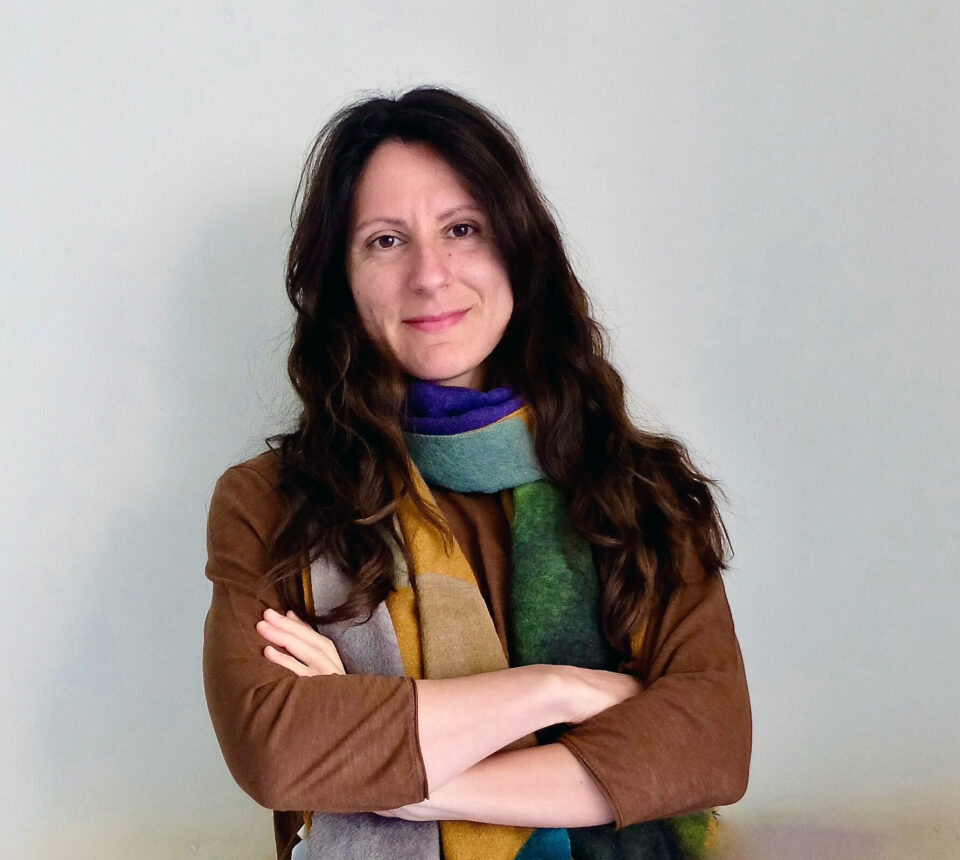Katerina Ioannidou: From soft physics to concrete applications
A researcher at the Laboratory of Mechanics and Civil Engineering (LMGC) in Montpellier, Katerina Ioannidou was awarded the CNRS bronze medal in 2024 for her work in statistical physics on porous concrete. Her research contributes to the design of materials capable of storing energy and sequestering carbon.

A physicist specializing in concrete. Katerina Ioannidou acknowledges that her research topic may seem surprising. "I found it very strange when I was offered a thesis on the physics of cement," recalls the researcher at the Laboratory of Mechanics and Civil Engineering, an ordinary material that she initially found too "unexotic." But ultimately, it's a fascinating material, very difficult to study and model, because you're never sure what you're working on," she adds. This complexity is linked to the number of chemical reactions that occur in cement. The subject is not particularly suited to physicists, who prefer more predictable materials.
He was right to continue exploring such complex materials. His understanding of their fundamental principles, modeled using statistical physics, earned him a bronze medal from the CNRS in 2024. His work is of interest because it can be applied to energy storage andCO2 sequestration solutions in cement. These are huge industrial challenges, given that cement—the main component of concrete, in which it acts as a binder—is the most widely used material in the world. Its production generates 7% of global carbon dioxide emissions ( GCCA figures). To reduce this footprint, Katerina Ioannidou's work explores two avenues. First, creating multifunctional building materials capable of storing energy.
Turning a concrete block into a battery
"For example, concrete lamps that would be capable of storing energy produced by renewable sources and could release it in the form of light," explains the physicist, who began working on a supercapacitor concrete while doing postdoctoral research at the Massachusetts Institute of Technology (MIT) in Boston, in an international laboratory associated with the CNRS.
Thanks to the Momentum program launched in 2016, she is funding her project on concrete for energy-autonomous buildings. The idea is to use the porosity of cement by filling it with carbon black (or porous carbon), a cheap material whose properties can transform a concrete block into a battery. More specifically, the conductivity and porosity of carbon black allow it to be charged with ions, enabling electrochemical energy storage. This work was rewarded with a patent in 2017 and a position at the CNRS the following year.
Katerina Ioannidou is also working on another application:CO2 sequestration in cement. The idea is to accelerate the carbonation process, a reaction with carbon dioxide that allows it to be fixed. Although this reaction occurs naturally, it is very slow. Thanks to the characteristics of carbon black added to cement, the reaction no longer takes decades, but only a few weeks. "These solutions have not yet been deployed on a large scale and do not solve everything. But they already have the merit of showing the scale of the problem to manufacturers," comments Ioannidou, who is working in particular with Greek cement manufacturer Titan on nanoporous cements.
The Physics of Soft Matter
Since completing her thesis in the civil engineering department at ETH Zurich, the researcher has been working on the industrial application of her research. She explains that she willingly swapped the theoretical physics of her master's degree at Utrecht University in the Netherlands for soft matter physics. "It's applied physics where I can project my numerical modeling work onto the materials around me. At first, discussions with engineers weren't easy because they're less interested in understanding the mechanisms than in the practical results. But these exchanges were a very good exercise in finding a common language. "
Having begun her career with a tour of Europe, including a bachelor's degree in Greece, where she is from, a master's degree in the Netherlands, a thesis in Switzerland, and then a stint in the United States before coming to work in France, she finds something unique about research in France: "Here, I really appreciate the collaboration between researchers; relationships are more open and less competitive than in countries where the Anglo-Saxon model dominates. The main downside, however, is access to funding."
